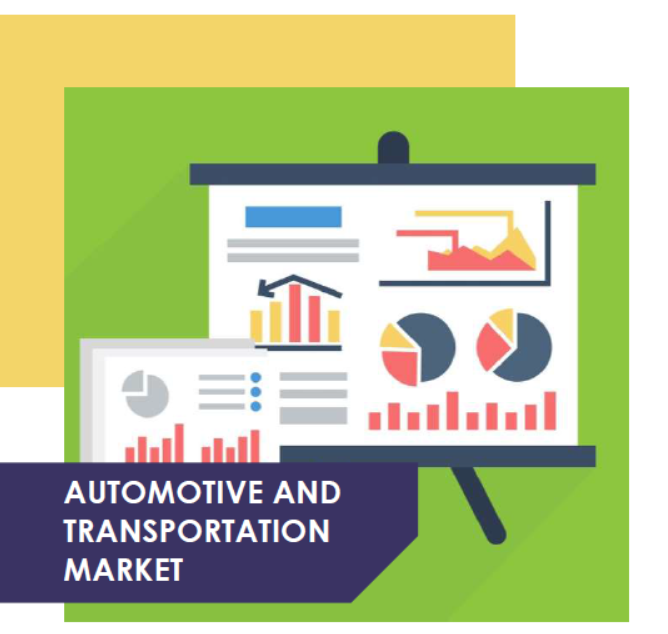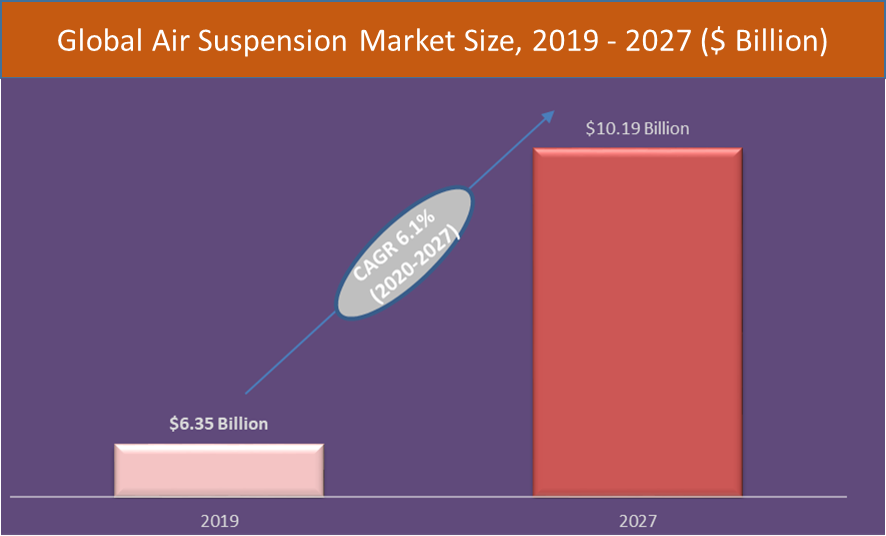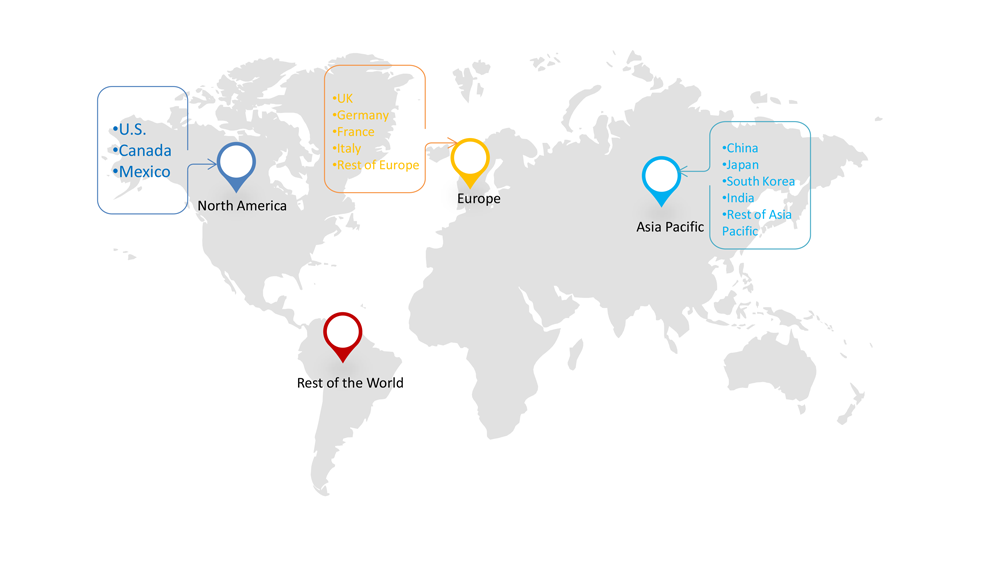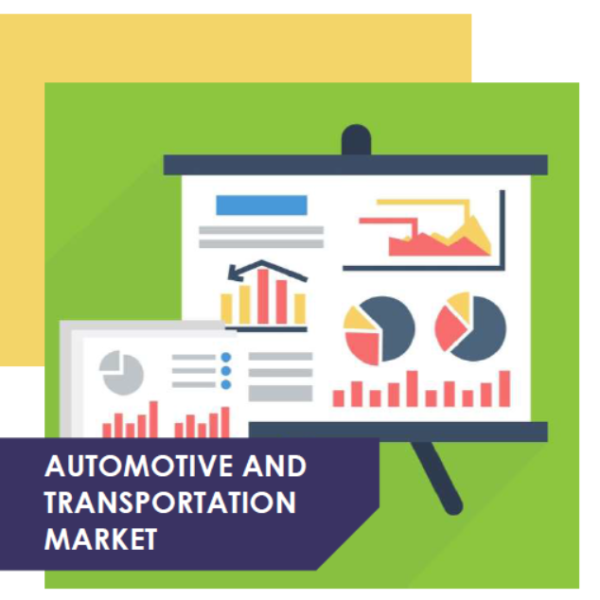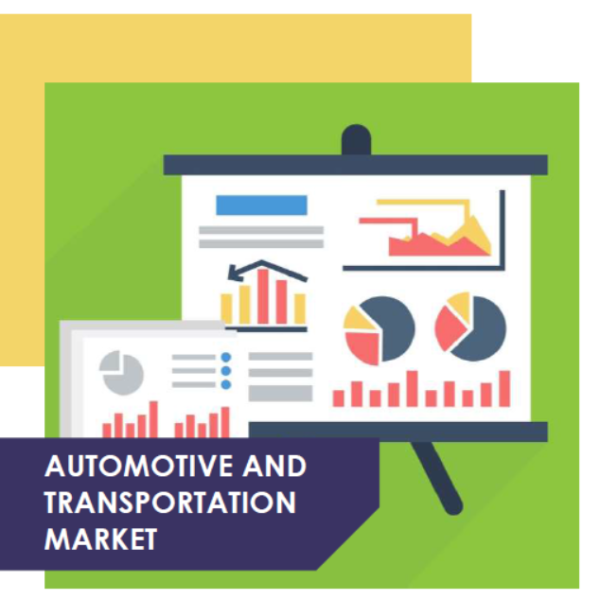Air Suspension Market Analysis and Global Forecast 2020-2027
$ 1,390.00 – $ 5,520.00Price range: $ 1,390.00 through $ 5,520.00
Air Suspension Market By Technology (Electronically Controlled and Non-Electronically Controlled) By Component (Shock Absorbers, Electronic Control Unit, Compressor, Air Reservoir, Others) By Vehicle Type (Passenger Vehicles and Commercial Vehicles) and By Geography: Global trends, opportunities and forecast – 2020 to 2026
Page: 129
The Global Air Suspension market was valued at $6.35 billion in 2019 and is anticipated to grow at a CAGR of 6.1% from 2020 to 2027. The factors that have led to the growth of the market include an increase in the demand for comfort in the vehicle, growing demand of air suspension in commercial vehicles, and among others.
Key Insight in the report:
The Global Air Suspension market report covers Executive Summary, Market Dynamics, Trend Analysis, Market Size and Forecast, Competitive Intelligence, Market Positioning, Product Benchmarking, and Opportunity Analysis.
The report covers extensive competitive intelligence which includes following data points:
- Business Overview
- Business Model
- Financial Data
- Financial – Existing
- Financial – Funding
- Product Segment Analysis and specification
- Recent Development and Company Strategy Analysis
- SWOT Analysis
The report covers market sizing and forecasting at the country level as well as at the segment level. Air Suspension Market is analyzed across below-mentioned different segments:
| TECHNOLOGY | COMPONENT | VEHICLE TYPE |
|---|---|---|
| Electronically Controlled | Shock Absorbers | Passenger Vehicles |
| Non-Electronically Controlled | Electronic Control Unit | Commercial Vehicles |
| Compressor | ||
| Air Reservoir | ||
| Others |
Some of the key players in of Air Suspension Market include:
- ThyssenKrupp AG
- Hendrickson International Corporation
- Continental AG
- Dunlop Systems and Components
- Wabco Holding Inc.
- Hitachi Ltd.
- ZF Friedrichshafen AG
- Magneti Marelli S.p.A.l
- Mando Corporation
- Firestone Industrial Products
REPORT CONTENT BRIEF:
- High-level analysis of the current and future market trends and opportunities
- Detailed analysis on current market drivers, restraining factors, and opportunities in the future
- Historical market size for the year 2018, market estimates for 2019, and forecast from 2020 to 2026
- Vendor market share analysis at each product level
- Competitor analysis with a detailed insight into its product segment, financial strength, and strategies adopted.
- Identifies key strategies adopted including product launches and developments, mergers and acquisitions, joint ventures, collaborations and partnerships as well as funding taken and investment done, among others.
Press Release

Global Pharmaceutical Manufacturing Market to Reach $1.38 Trillion by 2035 with 7.35% CAGR, New Research Shows

The Global Mammography Market Is Estimated To Record a CAGR of Around 10.29% During The Forecast Period

Glue Stick Market to Reach USD 2.35 Billion by 2034

Podiatry Service Market to Reach USD 11.88 Billion by 2034

Microfluidics Technology Market to Reach USD 32.58 Billion by 2034

Ferric Chloride Market to Reach USD 10.65 Billion by 2034

Family Practice EMR Software Market to Reach USD 21.52 Billion by 2034

Electric Hairbrush Market to Reach USD 15.95 Billion by 2034

Daily Bamboo Products Market to Reach USD 143.52 Billion by 2034

Cross-border E-commerce Logistics Market to Reach USD 112.65 Billion by 2034
Table of Contents
Chapter 1. Executive Summary Chapter 2. Scope Of The Study 2.1. Market Definition 2.2. Scope Of The Study 2.2.1. Objectives of Report 2.2.2. Limitations 2.3. Market Structure Chapter 3. Evolve BI Methodology Chapter 4. Market Insights and Trends 4.1. Supply/ Value Chain Analysis 4.1.1. Raw Material Providers 4.1.2. Manufacturing Process 4.1.3. Distributors/Retailers 4.1.4. End Users 4.2. Porter’s Five Forces Analysis 4.2.1. Threat Of New Entrants 4.2.2. Bargaining Power Of Buyers 4.2.3. Bargaining Power Of Suppliers 4.2.4. Threat Of Substitutes 4.2.5. Industry Rivalry 4.3. Technology Overview 4.4. Macro factor 4.5. Micro Factor Chapter 5. Market Dynamics 5.1. Introduction 5.2. DROC Analysis 5.2.1. Drivers 5.2.2. Restraints 5.2.3. Opportunities 5.2.4. Challenges 5.3. Patent Analysis 5.4. Industry Roadmap 5.5. Parent/Peer Market Analysis Chapter 6. Global Air Suspension Market, By Technology 6.1. Introduction 6.2. Electronically Controlled 6.3. Non-Electronically Controlled Chapter 7. Global Air Suspension Market, By Component 7.1. Introduction 7.2. Shock Absorbers 7.3. Electronic Control Unit 7.4. Compressor 7.5. Air Reservoir 7.6. Others Chapter 8. Global Air Suspension Market, By Vehicle Type 8.1. Introduction 8.2. Passenger Vehicles 8.3. Commercial Vehicles Chapter 9. Global Air Suspension Market, By Region 9.1. Introduction 9.2. North America 9.2.1. Introduction 9.2.2. Driving Factors, Opportunity Analyzed and Key Trends 9.2.3. Market Size and Forecast, By Country, 2020 - 2026 9.2.4. Market Size and Forecast, By Technology, 2020 - 2026 9.2.5. Market Size and Forecast, By Component, 2020 – 2026 9.2.6. Market Size and Forecast, By Vehicle Type, 2020 – 2026 9.2.7. US 9.2.7.1. Introduction 9.2.7.2. Driving Factors, Opportunity Analyzed and Key Trends 9.2.7.3. Market Size and Forecast, By Technology, 2020 - 2026 9.2.7.4. Market Size and Forecast, By Component, 2020 – 2026 9.2.7.5. Market Size and Forecast, By Vehicle Type, 2020 - 2026 9.2.8. Canada 9.2.8.1. Introduction 9.2.8.2. Driving Factors, Opportunity Analyzed and Key Trends 9.2.8.4. Market Size and Forecast, By Technology, 2020 - 2026 9.2.8.5. Market Size and Forecast, By Component, 2020 – 2026 9.2.8.6. Market Size and Forecast, By Vehicle Type, 2020 - 2026 9.3. Europe 9.3.1. Introduction 9.3.2. Driving Factors, Opportunity Analyzed and Key Trends 9.3.3. Market Size and Forecast, By Country, 2020 - 2026 9.3.4. Market Size and Forecast, By Technology, 2020 - 2026 9.3.5. Market Size and Forecast, By Component, 2020 – 2026 9.3.6. Market Size and Forecast, By Vehicle Type, 2020 – 2026 9.3.7. Germany 9.3.7.1. Introduction 9.3.7.2. Driving Factors, Opportunity Analyzed and Key Trends 9.3.7.3. Market Size and Forecast, By Technology, 2020 - 2026 9.3.7.4. Market Size and Forecast, By Component, 2020 – 2026 9.3.7.5. Market Size and Forecast, By Vehicle Type, 2020 - 2026 9.3.8. France 9.3.8.1. Introduction 9.3.8.2. Driving Factors, Opportunity Analyzed and Key Trends 9.3.8.3. Market Size and Forecast, By Technology, 2020 - 2026 9.3.8.4. Market Size and Forecast, By Component, 2020 – 2026 9.3.8.5. Market Size and Forecast, By Vehicle Type, 2020 - 2026 9.3.9. UK 9.3.9.1. Introduction 9.3.9.2. Driving Factors, Opportunity Analyzed and Key Trends 9.3.9.3. Market Size and Forecast, By Technology, 2020 - 2026 9.3.9.4. Market Size and Forecast, By Component, 2020 – 2026 9.3.9.5. Market Size and Forecast, By Vehicle Type, 2020 - 2026 9.3.10. Nordic Region 9.3.10.1. Introduction 9.3.10.2. Driving Factors, Opportunity Analyzed and Key Trends 9.3.10.3. Market Size and Forecast, By Technology, 2020 - 2026 9.3.10.4. Market Size and Forecast, By Component, 2020 – 2026 9.3.10.5. Market Size and Forecast, By Vehicle Type, 2020 - 2026 9.3.11. Rest Of Europe 9.3.11.1. Introduction 9.3.11.2. Driving Factors, Opportunity Analyzed and Key Trends 9.3.11.3. Market Size and Forecast, By Technology, 2020 - 2026 9.3.11.4. Market Size and Forecast, By Component, 2020 – 2026 9.3.11.5. Market Size and Forecast, By Vehicle Type, 2020 - 2026 9.4. Asia-Pacific 9.4.1. Introduction 9.4.2. Driving Factors, Opportunity Analyzed and Key Trends 9.4.3. Market Size and Forecast, By Country, 2020 - 2026 9.4.4. Market Size and Forecast, By Technology, 2020 - 2026 9.4.5. Market Size and Forecast, By Component, 2020 – 2026 9.4.7. Market Size and Forecast, By Vehicle Type, 2020 - 2026 9.4.8. China 9.4.8.1. Introduction 9.4.8.2. Driving Factors, Opportunity Analyzed and Key Trends 9.4.8.3. Market Size and Forecast, By Technology, 2020 - 2026 9.4.8.4. Market Size and Forecast, By Component, 2020 – 2026 9.4.8.5. Market Size and Forecast, By Vehicle Type, 2020 - 2026 9.4.9. India 9.4.9.1. Introduction 9.4.9.2. Driving Factors, Opportunity Analyzed and Key Trends 9.4.9.3. Market Size and Forecast, By Technology, 2020 - 2026 9.4.9.4. Market Size and Forecast, By Component, 2020 – 2026 9.4.9.5. Market Size and Forecast, By Vehicle Type, 2020 - 2026 9.4.10. Japan 9.4.10.1. Introduction 9.4.10.2. Driving Factors, Opportunity Analyzed and Key Trends 9.4.10.3. Market Size and Forecast, By Technology, 2020 - 2026 9.4.10.4. Market Size and Forecast, By Component, 2020 – 2026 9.4.10.5. Market Size and Forecast, By Vehicle Type, 2020 - 2026 9.4.11. South Korea 9.4.11.1. Introduction 9.4.11.2. Driving Factors, Opportunity Analyzed and Key Trends 9.4.11.3. Market Size and Forecast, By Technology, 2020 - 2026 9.4.11.4. Market Size and Forecast, By Component, 2020 – 2026 9.4.11.5. Market Size and Forecast, By Vehicle Type, 2020 - 2026 9.4.12. Rest Of Asia-Pacific 9.4.11.1. Introduction 9.4.12.2. Driving Factors, Opportunity Analyzed and Key Trends 9.4.12.3. Market Size and Forecast, By Technology, 2020 - 2026 9.4.12.4. Market Size and Forecast, By Component, 2020 – 2026 9.4.12.5. Market Size and Forecast, By Vehicle Type, 2020 - 2026 9.5. Rest Of The World (RoW) 9.5.1. Introduction 9.5.2. Driving Factors, Opportunity Analyzed and Key Trends 9.5.3. Market Size and Forecast, By Technology, 2020 - 2026 9.5.4. Market Size and Forecast, By Component, 2020 – 2026 9.5.5. Market Size and Forecast, By Vehicle Type, 2020 - 2026 Chapter 10. Company Landscape 10.1. Introduction 10.2. Vendor Share Analysis 10.3. Key Development Analysis 10.4. Competitor Dashboard Chapter 11. Company Profiles 11.1. ThyssenKrupp AG 11.1.1. Business Overview 11.1.2. Financial Analysis 11.1.2.1. Financial – Existing/Funding 11.1.3. Product Portfolio 11.1.4. Recent Development and Strategies Adopted 11.1.5. SWOT Analysis 11.2. Hendrickson International Corporation 11.2.1. Business Overview 11.2.2. Financial Analysis 11.2.2.1. Financial – Existing/Funding 11.2.3. Product Portfolio 11.2.4. Recent Development and Strategies Adopted 11.2.5. SWOT Analysis 11.3. Continental AG 11.3.1. Business Overview 11.3.2. Financial Analysis 11.3.2.1. Financial – Existing/Funding 11.3.3. Product Portfolio 11.3.4. Recent Development and Strategies Adopted 11.3.5. SWOT Analysis 11.4. Dunlop Systems and Component 11.4.1. Business Overview 11.4.2. Financial Analysis 11.4.2.1. Financial – Existing/Funding 11.4.3. Product Portfolio 11.4.4. Recent Development and Strategies Adopted 11.4.5. SWOT Analysis 11.5. Wabco Holding Inc. 11.5.1. Business Overview 11.5.2. Financial Analysis 11.5.2.1. Financial – Existing/Funding 11.5.3. Product Portfolio 11.5.4. Recent Development and Strategies Adopted 11.5.5. SWOT Analysis 11.6. Hitachi Ltd. 11.6.1. Business Overview 11.6.2. Financial Analysis 11.6.2.1. Financial – Existing/Funding 11.6.3. Product Portfolio 11.6.4. Recent Development and Strategies Adopted 11.6.5. SWOT Analysis 11.7. ZF Friedrichshafen AG 11.7.1. Business Overview 11.7.2. Financial Analysis 11.7.2.1. Financial – Existing/Funding 11.7.3. Product Portfolio 11.7.4. Recent Development and Strategies Adopted 11.7.5. SWOT Analysis 11.8. Magneti Marelli S.p.A.l 11.8.1. Business Overview 11.8.2. Financial Analysis 11.8.2.1. Financial – Existing/Funding 11.8.3. Product Portfolio 11.8.4. Recent Development and Strategies Adopted 11.8.5. SWOT Analysis 11.9. Mando Corporation 11.9.1. Business Overview 11.9.2. Financial Analysis 11.9.2.1. Financial – Existing/Funding 11.9.3. Product Portfolio 11.9.4. Recent Development and Strategies Adopted 11.9.5. SWOT Analysis 11.10. Firestone Industrial Products 11.10.1. Business Overview 11.10.2. Financial Analysis 11.10.2.1. Financial – Existing/Funding 11.10.3. Product Portfolio 11.9.4. Recent Development and Strategies Adopted 11.9.5. SWOT Analysis Chapter 12. Key Takeaways
Connect To Analyst
Research Methodology


